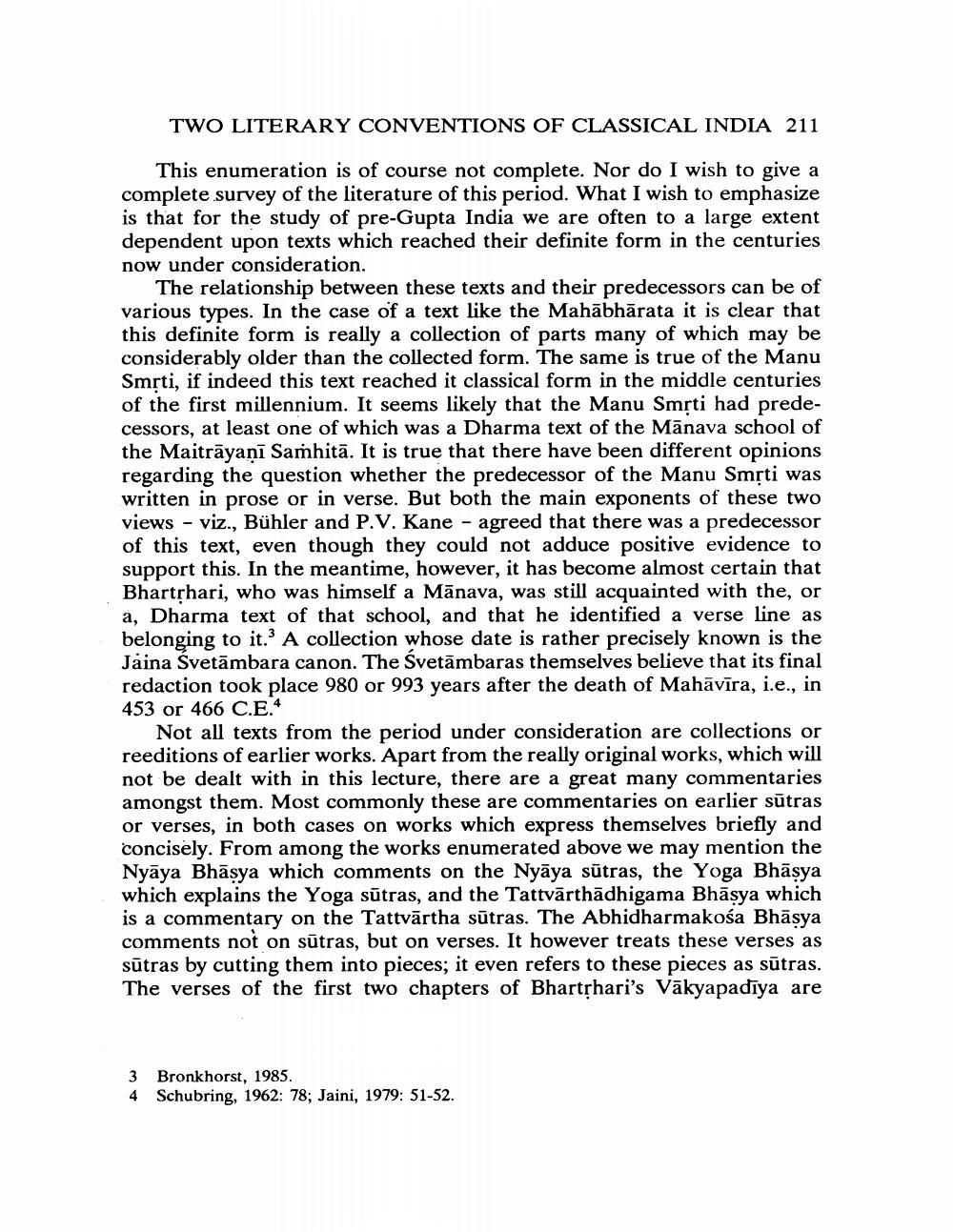________________
TWO LITERARY CONVENTIONS OF CLASSICAL INDIA 211
This enumeration is of course not complete. Nor do I wish to give a complete survey of the literature of this period. What I wish to emphasize is that for the study of pre-Gupta India we are often to a large extent dependent upon texts which reached their definite form in the centuries now under consideration.
The relationship between these texts and their predecessors can be of various types. In the case of a text like the Mahabharata it is clear that this definite form is really a collection of parts many of which may be considerably older than the collected form. The same is true of the Manu Smrti, if indeed this text reached it classical form in the middle centuries of the first millennium. It seems likely that the Manu Smṛti had predecessors, at least one of which was a Dharma text of the Manava school of the Maitrāyaṇī Samhita. It is true that there have been different opinions regarding the question whether the predecessor of the Manu Smrti was written in prose or in verse. But both the main exponents of these two views viz., Bühler and P.V. Kane agreed that there was a predecessor of this text, even though they could not adduce positive evidence to support this. In the meantime, however, it has become almost certain that Bhartṛhari, who was himself a Manava, was still acquainted with the, or a, Dharma text of that school, and that he identified a verse line as belonging to it.' A collection whose date is rather precisely known is the Jaina Svetambara canon. The Śvetāmbaras themselves believe that its final redaction took place 980 or 993 years after the death of Mahāvīra, i.e., in 453 or 466 C.E.4
Not all texts from the period under consideration are collections or reeditions of earlier works. Apart from the really original works, which will not be dealt with in this lecture, there are a great many commentaries amongst them. Most commonly these are commentaries on earlier sütras. or verses, in both cases on works which express themselves briefly and concisely. From among the works enumerated above we may mention the Nyaya Bhāṣya which comments on the Nyaya sūtras, the Yoga Bhāṣya which explains the Yoga sūtras, and the Tattvarthädhigama Bhāṣya which is a commentary on the Tattvärtha sūtras. The Abhidharmakośa Bhäṣya comments not on sūtras, but on verses. It however treats these verses as sutras by cutting them into pieces; it even refers to these pieces as sūtras. The verses of the first two chapters of Bhartṛhari's Väkyapadiya are
3 Bronkhorst, 1985.
4 Schubring, 1962: 78; Jaini, 1979: 51-52.




